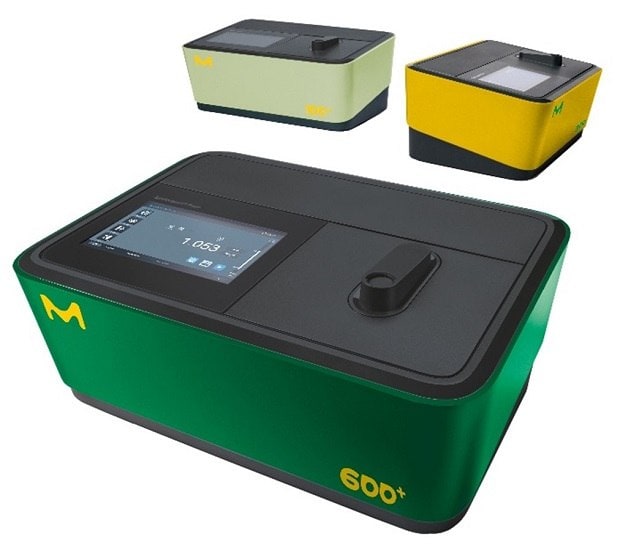Photometric Determination of Total Phosphorus in Plant Materials by Phosphorus Molybdenum Blue Method Subsequent to an Acid Extraction
Abstract
The protocol details the photometric determination of total phosphorus in plant materials using the phosphorus molybdenum blue method. Following digestion transforming all phosphorus to phosphate, a phosphomolybdate complex is formed. Spectroquant® test kits and spectrophotometers are employed to deliver precise results, aiding in the analysis of plant nutrient levels and the effectiveness of soil, manure, or fertilizers used in cultivation.
Section Overview:

Spectroquant® spectrophotometers - Prove 100 plus, Prove 300 plus, & Prove 600 plus
Introduction
Phosphorus, along with nitrogen and potassium is an important macronutrient for the growth and development of plants. Specifically, phosphorus plays an important role in the development of the root system, and in the development of the nutrient uptake system by the plant. Plants obtain phosphorus from soil mainly as phosphates. It has been observed that irrespective of plant species, the general phosphorus content should be 0.05-0.5% of a plant’s dry weight1. Phosphorus deficiency can lead to underdevelopment and hampered growth of a plant. Even when a plant grows in soil containing a sufficient concentration of phosphorus, it can be phosphorus-deficient when that soil has phosphorus in the form of inorganic phosphates, which have low solubility and high sorption capacity. It is therefore important to analyze total phosphorus in plant materials, to study the quality of the soil, manure, or fertilizer used for cultivation.
This application note details a relatively inexpensive estimation of phosphorus by the molybdate method in plant materials. The described determination of phosphorus (total) is based on the formation of the phosphomolybdate complex with digestion.
Reagents, Instruments and Materials
Phosphate Test Kits/Reagents
For the measurement, one of the following Spectroquant® test kits is necessary:
- Spectroquant® Phosphate Cell Test (1.14543)
- Spectroquant® Phosphate Cell Test (1.14729)
- Spectroquant® Phosphate Test (1.14848)
Instrument(s) & Devices
For the measurement, one of the following Spectroquant® photometers is necessary:
- Spectroquant® VIS Spectrophotometer Prove 100 Plus (1.73026)
- Spectroquant® UV/VIS Spectrophotometer Prove 300 Plus (1.73027)
- Spectroquant® UV/VIS Spectrophotometer Prove 600 Plus (1.73028)
- Spectroquant® Colorimeter Move 100 (1.73632)
Also, legacy systems
- Spectroquant® Spectrophotometer Prove 100/300/600
- Spectroquant® Photometer NOVA 30/60/60A
Software for Data transfer
- Optional Spectroquant® Prove Connect to LIMS software package (Y.11086) to transfer your data into an existing LIMS system.
Instrument Accessories
- Rectangular cells 10 mm (1.14946) and/or
- Rectangular cells 20 mm (1.14947) and/or
- Rectangular cells 50 mm (1.14944)
Other Reagents and Accessories
- Hydrochloric acid 37 % for analysis (1.00317)
- Nitric acid 65 % for analysis (1.00456)
- Water for analysis (1.16754)
- Empty cells 16 mm with screw caps (1.14724)
Experimental Procedure
Sample Preparation
- In a well-covered glass beaker dissolve about 100 mg of the sample in 3 mL hydrochloric acid (37%) and 3 mL nitric acid (65%) in the steam bath.
- When completely dissolved, evaporate the acids, to a well-dried, acid-free, crystalline solid residue.
- After taking up a few mL of water for analysis, transfer the solution to a 1000 mL volumetric flask, fill it to the mark with water for analysis, and mix well.
Analysis
Determine with one of the above-mentioned test kits following the instructions under “Procedure” (no additional digestion needed).
Calculation
Phosphorus (total) content in % = (analysis value in mg/L P x 5) / (weight of sample in mg)
See more applications for photometry at Protocols and Application Notes
References
Per continuare a leggere, autenticati o crea un account.
Non hai un Account?